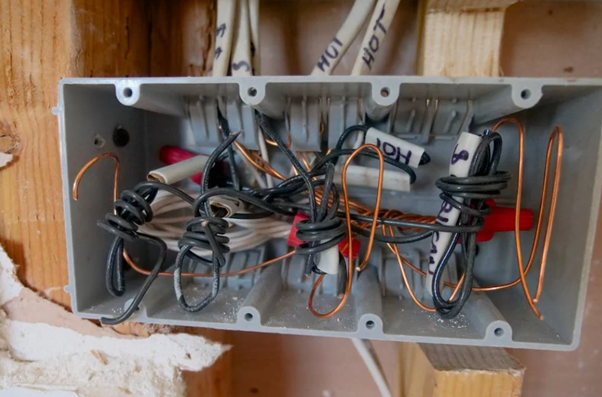How Manufacturers Can Stay Resilient Amid the Recession
Economic downturns can be particularly challenging for the manufacturing industry. However, a few strategic steps can help any manufacturing company make more out of less and save money during a recession.

Invest in Technology to Aid Recession Recovery
A common mistake manufacturers make going into a recession is cutting off all unnecessary investments. While it is essential to be smart about spending during a recession, the right investments can actually help manufacturers stay resilient. Investing in technological assets before and during a recession can help manufacturers recover faster afterward.
Adopting automation technologies like robotics can help manufacturers streamline their operations. Robotics, AI and other automation technologies significantly reduce waste, improve productivity and supplement understaffed teams. High unemployment is a key indicator of recessions, so preparing to make do with a smaller workforce is crucial for resilience.
Automation technologies can be a great long-term ROI, as well. Since automation creates transformational change in manufacturers’ operations, it continues to pay itself off over multiple years. These gains come in cost savings, higher productivity and throughput, greater visibility, and overall higher-quality products.
Adopting automation during a recession can help manufacturers reduce error rates so less raw materials go to waste. Robotics can take over roles that hiring cannot fill. The precision and accuracy automation offer ensure products can be produced faster without compromising on quality. During a recession, these benefits help eliminate resource and monetary waste.
Monitor, Plan and Optimize
Visibility and preparedness are crucial for surviving a recession. Manufacturers must ensure they have the tools to monitor their operations closely and plan for setbacks. This may require some initial investment, but it will be worth it.
Prepare for Critical Expenses
Preparing for accidents, disasters and disruptions can help manufacturers minimize the financial impact of these incidents. The last thing anyone wants during a recession is for a critical piece of equipment to fail, but situations like this can happen. Planning ensures manufacturers can take steps to prevent disasters or respond to them responsibly when they occur.
For example, transformers can have annual production values of over $100 million annually, meaning a transformer failure can cost thousands of dollars in downtime. Letting equipment go without replacing or repairing to save money can increase the likelihood of costly equipment failures like this. Manufacturers need to consider the possibility of these incidents and plan for maintenance expenses.
Increase Visibility
During a recession, reducing expenses as much as possible is crucial. High visibility is vital for making this happen. Manufacturers need insight into how their facilities operate to identify areas where costs could be reduced.
IoT devices are great for improving visibility. Manufacturers can install IoT sensors at critical points in their facilities to collect data around the clock. For example, sensors could time how fast units move through an assembly line. Data from these sensors would reveal any bottlenecks in the manufacturing process.
With this information, manufacturers can address key issues that are wasting money, whether in the form of time or materials. In fact, insights from IoT data can often highlight the areas of a manufacturer’s operations that are the best opportunities for automation. For example, if quality control checkpoints are bottlenecks, a manufacturer could adopt AI-powered cameras to scan units rapidly, improving QC efficiency.
Optimize Operations
Increasing visibility leads to another vital element of recession resilience — optimization. Highly-optimized assembly lines make the most out of the least and minimize waste while maximizing throughput. Optimization is crucial for ensuring raw materials do not go to waste when prices are higher than usual.
There are many ways to improve manufacturing optimization. Logistics modeling and simulation apps are a great place to start. These programs use AI and machine learning to analyze operations and highlight areas for improvement. Manufacturers can use a digital twin to test out changes to their operations before putting them into practice.
This allows them to identify and resolve inefficiencies and get insights into possible productivity gains for a given operations layout. By modeling operations digitally first, manufacturers can minimize disruption and revenue loss from changes made to their operations.

Be Strategic About Workforce Management
Labor shortages can cause serious challenges for industrial businesses during a recession. Studies show seven out of 10 manufacturers suffer lower productivity due to unfilled jobs. While manufacturers may have little money to hire a larger workforce, they can take steps to make the most of the employees they have.
For example, reskilling and upskilling are great for expanding workers’ skill sets rather than hiring new people. In-house training opportunities are beneficial for employees and manufacturers alike. They offer rewarding career growth for staff while giving them the exact skills their employer needs. This allows manufacturers to build a smaller workforce with many skills instead of a larger crew with fewer skills.
Training and support from manufacturers can also help employees improve their performance. For instance, advanced training in robot maintenance could help robotics technicians reduce errors on the job and complete repairs faster.
Staying Resilient During a Recession
Economic downturns are challenging for everyone, but manufacturing tends to get hit harder than other industries. Manufacturers need to build resilience before and during a recession to thrive during economic recovery. Manufacturers can improve their stability through smart technological investments, operations optimization, high visibility, and employee training and support.















